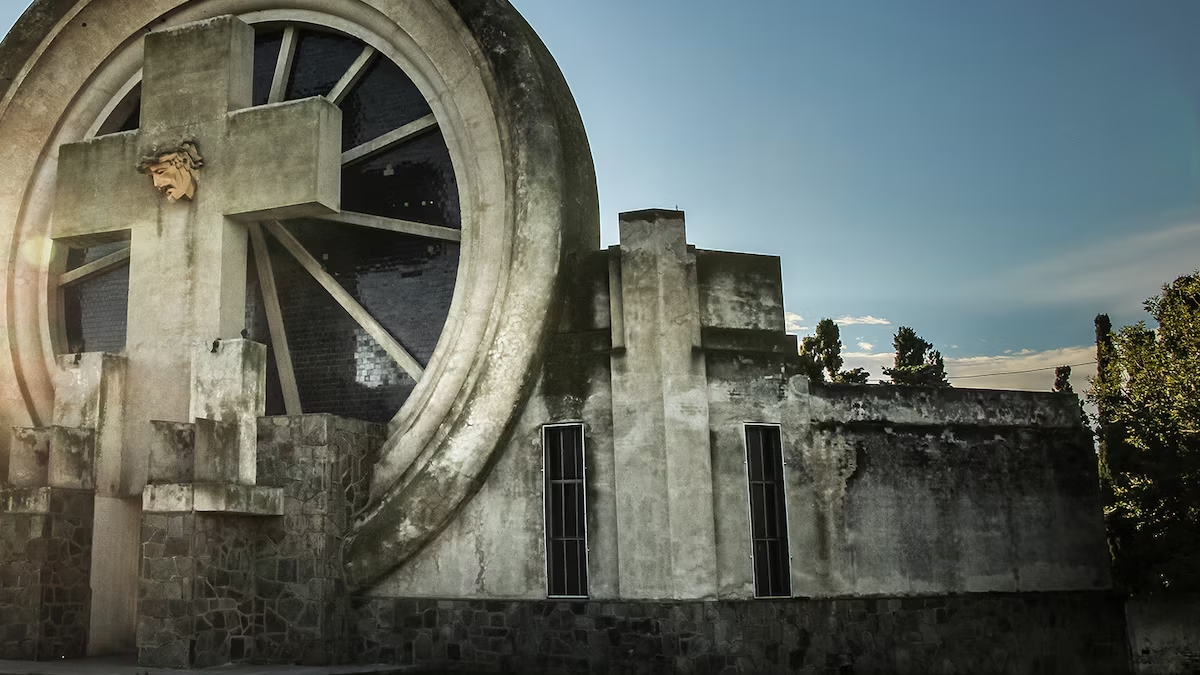The Salamone Route It consists of different destinations where the architect, promoted by Governor Manuel Fresco, carried out different works to transform small rural towns into epicenters of modernism, reactivate the economy and exalt government management. He Francisco Salamone’s legacy continues to impact locals and tourists alike.
His work was declared Cultural Heritage of the province of Buenos Aires in 2001. His work was carried out in just 4 years, between 1936 and 1940, with more than 70 works in 28 Buenos Aires towns, he carried out the largest architectural plan in the country and favored tourism in rural towns in the Province that did not have major attractions.
Francisco Salamone
Who was Francisco Salomone
Francesco Salamone was born in Leonforte, Italy on June 5, 1897. He emigrated with his family to Argentina as a child, between 1903 and 1906. Following in his father’s footsteps, he graduated as senior master of works at Otto Krause College. He then entered the University of La Plata and later the University of Córdoba, where he left in 1920 with the degrees of Architect and Civil Engineer.
Although it began with minor works in the province of Córdoba, its most notable work was the 70 works in the 28 municipalities of the province of Buenos Aires promoted by Governor Manuel Fresco in an ambitious revolutionary public works plan that was a resounding success for the Buenos Aires territory and today it is a reason for tourist visits.
Salomone Route Destinations
The destinations where the architect left his mark extend throughout the province of Buenos Aires:
Colonel Pringles
This town houses the Municipal slaughterhouse, one of the most sophisticated works. It has a blade-shaped tower that gives the building an artistic aesthetic. There is also the Government Palacea building with a clock tower that surpasses the local church in height, symbolizing the power of the State and finally the Cemetery Cross.
Laprida
In this town, the Municipal Palace It also stands with its 30-meter-high clock tower, in front is the Pedro Pereyra Squarewhich integrates functionality and art in public space. In the cemetery, there is the 33 meter cross high, the second highest in South America after Christ the Redeemer.
Saldungaray
In this place is the Saldungaray Cemetery which combines a cross, a cement wheel and the head of Christ. It is considered Salamone’s most contemplative work. He also built the Municipal buildingwith a 17-meter clock tower.
Guamini
This town has a surprising Municipal Palace with very characteristic geometric lines, inspired by a ship seen from the air. Each detail represents a wave. The other of his works is the Municipal Slaughterhouse.
Carhué and Villa Epecuén (Adolfo Alsina)
In an almost surreal setting, among the ruins of Villa Epecuén, is this slaughterhouse. One of the few buildings that survived the 1985 flood, with a futuristic design and a dilapidated appearance that seems straight out of a future dystopia.
Alberti
He Municipal Palace It dominates the city center with its robust tower and geometric clock. The Secondary Education School No. 2 “Pablo Pizzurno” and the cemetery morgue They also have the signature of the architect of the pampas.
Blue
He Blue Cemetery It is perhaps Salamone’s most famous work. Its imposing portal is crowned by the giant initials RIP, while the sculpture of the Angel of Deathsword in hand, becomes an imposing guardian. Designed to inspire respect and transcendence, this cemetery inaugurated in 1938 is a masterpiece of monumentalism.
The Municipal Slaughterhouse is also a must-see stop, impressive for its blade-shaped tower. Furthermore, there is the San Martin Squarewhere zigzag tiles designed by Salamone create a visual impact.
Source: Ambito
I am a 24-year-old writer and journalist who has been working in the news industry for the past two years. I write primarily about market news, so if you’re looking for insights into what’s going on in the stock market or economic indicators, you’ve come to the right place. I also dabble in writing articles on lifestyle trends and pop culture news.




